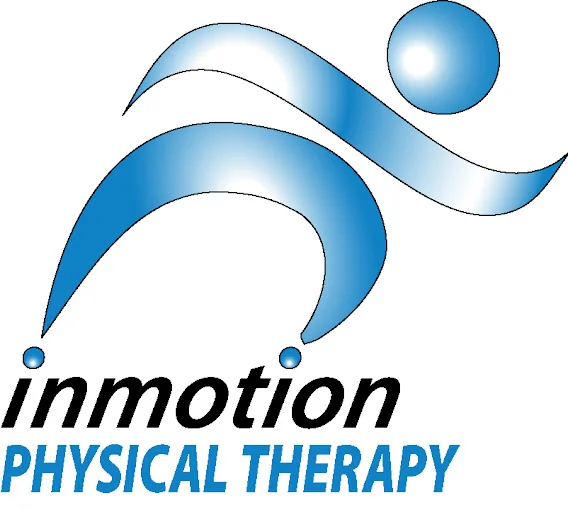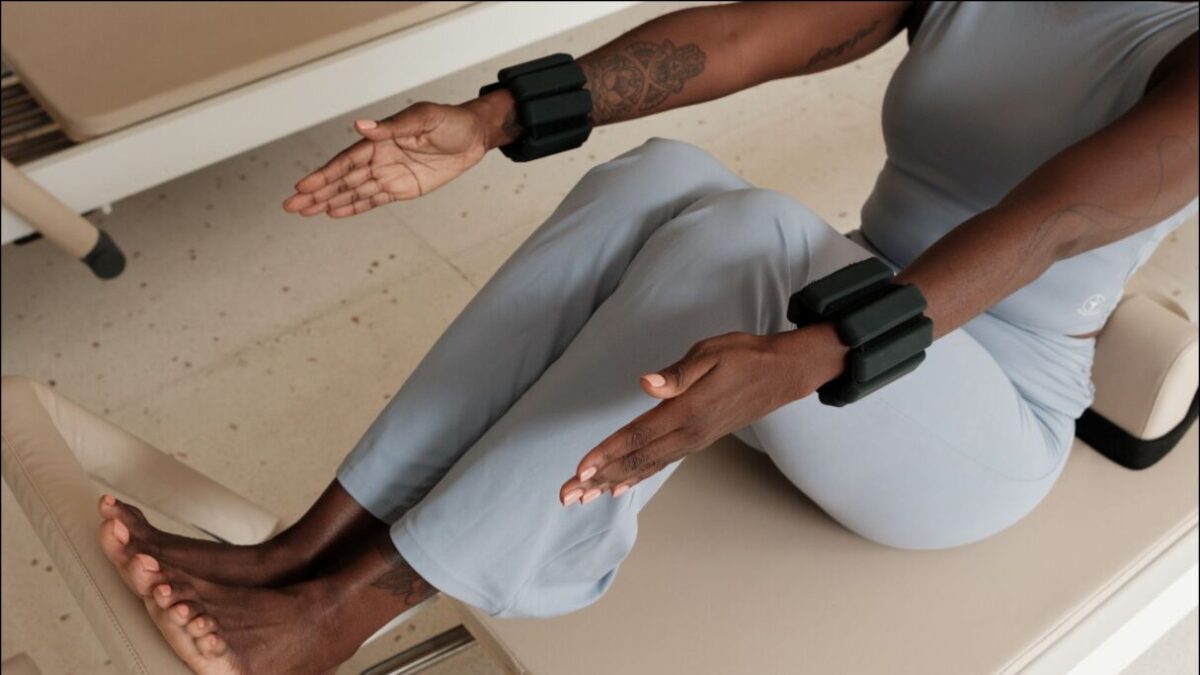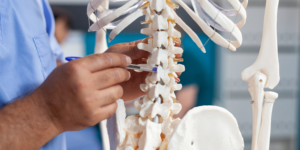Are you a new mom feeling lost about getting back into exercise? You’re not alone!
Picture this: You’ve just spent nine months growing a tiny human, gone through the incredible journey of childbirth, and now you’re ready to reclaim your body. But here’s the kicker – after your 6-week checkup and a quick “all clear” from your doctor, you’re left wondering, “Now what?”
As a Doctor of Physical Therapy specializing in sports medicine and a mom of three, I was shocked by the lack of guidance for postpartum exercise. It’s mind-boggling, isn’t it? If you have knee surgery, you get a detailed recovery plan. But after creating and delivering a whole person? Crickets.
Here’s the good news: staying active during and after pregnancy can do wonders for your physical and mental health. The bad news? There’s llittle information out there on how to do it safely.
That’s where this blog post comes in. We’re going to tackle the fear, anxiety, and pressure head-on. I’ll offer you a structured, step-by-step approach to postpartum exercise that’s backed by the latest research. Whether you’re itching to hit the gym or just want to feel strong enough to carry your baby and groceries at the same time, I’ve got you covered.
Understanding Postpartum Physiological Changes
During pregnancy and childbirth, a woman’s body undergoes significant changes:
- Pelvic Floor Impact: During delivery, pelvic floor musculature can stretch to 250% of its resting length. Full recovery typically occurs 4-6 months postpartum.
- Abdominal Separation: Diastasis recti, or separation of the abdominal muscles, is common and requires specific attention during recovery.
- Hormonal Fluctuations: Hormonal changes can affect joint laxity and overall body function for several months postpartum.
- Cardiovascular Changes: Blood volume and cardiac output gradually return to pre-pregnancy levels over several weeks.
Your body has slowly adapted to make these changes, and sometimes our return to exercise is slower than we would like.
The Importance of Postpartum Exercise
Research indicates that maintaining physical activity during and after pregnancy offers significant physiological benefits, regardless of prior fitness levels. Benefits include:
- Improved cardiovascular health
- Enhanced muscle strength and endurance
- Better weight management
- Reduced risk of postpartum depression
- Improved sleep quality
However, it’s crucial to approach postpartum exercise with caution and proper guidance.
Postpartum Exercise Timeline
Return to exercise should be gradual and based on individual recovery. After looking through available research from (Selman et al., 2022) and (Mottola et al., 2018) (here, and here) this is a SAMPLE slow, structured approach.
Remember, each person’s journey is different and this exercise plan might not be appropriate for you. It is best to consult with your medical professional, as this is not medical advice.
Weeks 0-2: Early Recovery
Focus: Rest (yes please try to rest), gentle movement, and body awareness
- Diaphragmatic Breathing: Essential for core reconnection and relaxation
- Pelvic Tilts: Gentle exercises to reactivate core muscles
- Short Walks: As tolerated, focusing on posture and breathing (start with 10-15 minutes)
Note: Pay attention to proper ergonomics when caring for your newborn to prevent unnecessary strain.
Weeks 3-4: Foundation Building
Focus: Core activation and pelvic floor rehabilitation
- Transverse Abdominis Activation: In various positions (supine, side-lying, quadruped)
- Pelvic Floor Exercises: Focusing on both contraction and relaxation
- Gentle Bridges: For glute activation and lower back mobility
Weeks 5-6: Progressive Strengthening
Focus: Gradual introduction of bodyweight exercises
- Exercises: Clams, standing marches, hip abduction/extension, fire hydrants, squats, heel raises
- Repetitions: 15-30 reps
- Resistance: Bodyweight or light resistance (<10 lbs) as tolerated
Weeks 7-12: Increased Intensity
Focus: Building strength and endurance
- Exercises: Progress to weighted squats, single-leg exercises, lunges, step-ups, modified planks
- Cardiovascular Activity: Gradually increase walking duration to 30 minutes, introduce light jogging intervals if appropriate (Christopher et al. and de Mattos Lourenco et al. have found that more than 33% of postpartum runners experience pain upon their return as well as some form of urinary incontinence)
- Resistance Training: 8-12 repetitions, gradually increase weights as tolerated
Week 13 and Beyond: Advanced Progression
Focus: Return to pre-pregnancy activity levels
- Running: Begin with walk-jog intervals, gradually increasing running time
- High-Impact Activities: Introduce plyometrics and sport-specific drills
- Strength Training: Progress to more challenging exercises and heavier weights
Running-specific guidelines:
- Wait until at least 8 weeks postpartum and after walking 30 minutes symptom-free
- Use a 1:2 work-to-rest ratio when starting (e.g., 1 minute jog, 2 minutes walk)
- Aim for a running cadence of 160-180 steps per minute
- Increase mileage by no more than 2-10% per week
Key Considerations for Safe Postpartum Exercise
- Individual Variability: Every woman’s postpartum journey is unique. Progress should be based on individual recovery, not a set timeline.
- Pelvic Floor Health: Monitor for signs of pelvic floor dysfunction, such as incontinence or pelvic pain, and adjust exercises accordingly.
Be aware that some women may have overactive pelvic floors and may not benefit from Kegel exercises alone.
A Pelvic Floor Physical Therapy Appointment is a good investment!- we do not provide Pelvic Floor PT here at In Motion Physical Therapy but we have some great PTs to refer you to
- Diastasis Recti: Assess for abdominal separation and modify core exercises as needed. (Again, pelvic floor PT’s are your go-to experts here)
- Nutrition and Hydration: Ensure adequate caloric intake and hydration, especially if breastfeeding. (Listen to THIS PODCAST for some great tips on nutrition while breastfeeding.)
- Sleep and Recovery: Prioritize rest and recovery, adjusting exercise intensity based on energy levels.
- Pain Monitoring: Any pain during or after exercise should be addressed promptly.
When to Seek Professional Help
Consult a pelvic health physical therapist or your healthcare provider if you experience:
- Persistent pelvic pain
- Urinary or fecal incontinence
- Heaviness or pressure in the pelvic region
- Separation of the abdominal muscles that doesn’t improve
- Pain during sexual intercourse
Conclusion
Returning to exercise postpartum is a gradual process that requires patience, awareness, and proper guidance. By following this comprehensive guide and listening to your body, you can safely regain strength, improve fitness, and reduce the risk of injury. Remember, the goal is not just to return to your pre-pregnancy fitness level, but to build something different. Perhaps a more resilient body that supports your new role as a mother.
At In Motion Physical Therapy, we specialize in guiding athletes and new mothers through their postpartum fitness journey. Our one-on-one care ensures that you receive personalized attention tailored to your specific needs and goals. If you need additional support or have concerns about your postpartum recovery, Book an Evaluation HERE with our team of expert physical therapists.
Remember, every step forward, no matter how small, is progress. Stay patient, stay consistent, and prioritize your health and well-being as you navigate this new chapter in your life.
References:
- Selman, R., Early, K., Battles, B., Seidenburg, M., Wendel, E., & Westerlund, S. (2022). Maximizing Recovery in the Postpartum Period: A Timeline for Rehabilitation from Pregnancy through Return to Sport. International Journal of Sports Physical Therapy, 17(6), 1170-1183. https://doi.org/10.26603/001c.37863
- Mottola, M. F., Davenport, M. H., Ruchat, S. M., Davies, G. A., Poitras, V. J., Gray, C. E., … & Zehr, L. (2018). 2019 Canadian guideline for physical activity throughout pregnancy. British Journal of Sports Medicine, 52(21), 1339-1346. https://doi.org/10.1136/bjsports-2018-100056
- Christopher, S. M., Cook, C. E., & Snodgrass, S. J. (2021). What are the biopsychosocial risk factors associated with pain in postpartum runners? Development of a clinical decision tool. PLOS ONE, 16(8), e0255383. https://doi.org/10.1371/journal.pone.0255383
- de Mattos Lourenco, T. R., Matsuoka, P. K., Baracat, E. C., & Haddad, J. M. (2018). Urinary incontinence in female athletes: a systematic review. International Urogynecology Journal, 29(12), 1757-1763. https://doi.org/10.1007/s00192-018-3629-z



